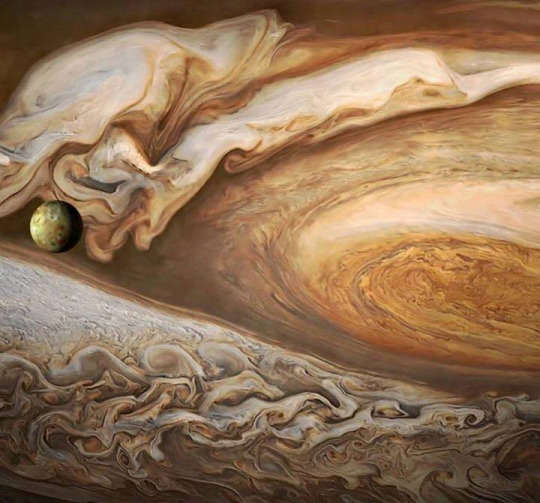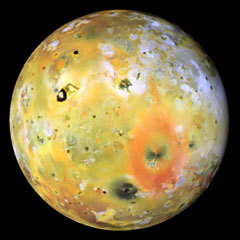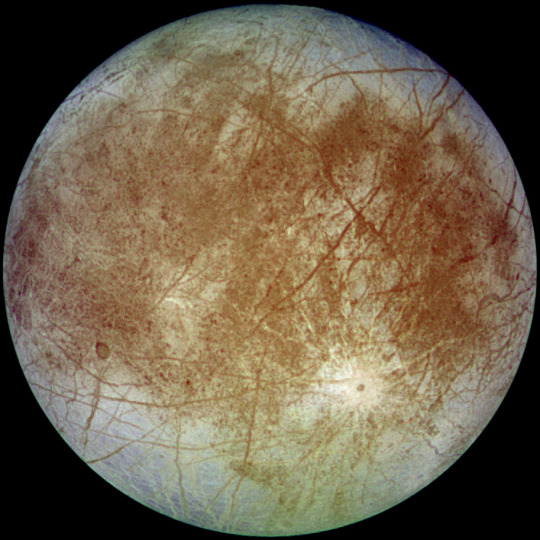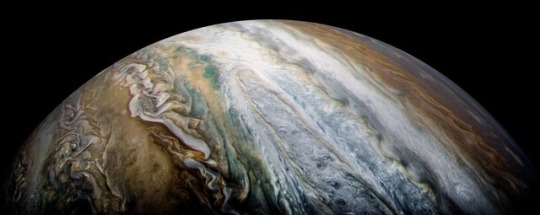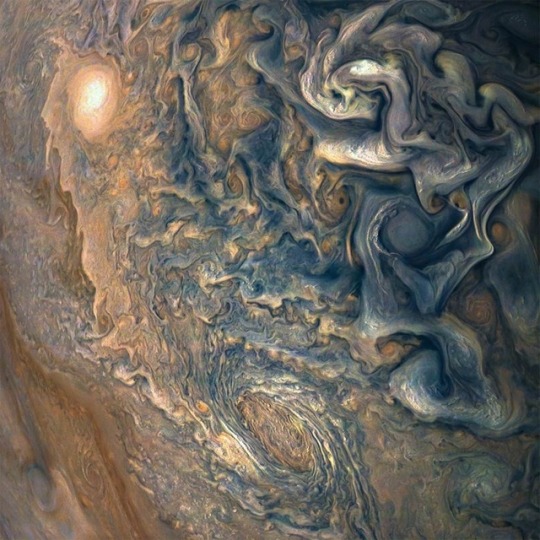I'm a Physicist turned Science Educator. Astronomy inspired my love for science, teaching, and science activism. I hope you will share your love of all things Astro-related here. Please send me messages of astronomy questions and topics.
Don't wanna be here? Send us removal request.
Photo








Mimas (moon of Saturn) taken by the Cassini spacecraft.
Credit: NASA/JPL
7K notes
·
View notes
Photo






hannah: Surface of Mars, photographed by Mars Express, 25th November 2005.
Image runs from 32°S 201°E about 710 km due south across the Terra Sirenum highlands to 44°S 201°E. The Sirenum Fossae run across the top of the 2nd image. The 5th and 6th images show a central section of the 300 km-wide Newton Crater, including what looks like part of the central peak complex (notice dunes, dark blue, on the left hand side).
Composite of 3 visible light images for colour, and one monochrome image for detail. Colour balance is not naturalistic.
Image credit: ESA. Composite: AgeOfDestruction.
10K notes
·
View notes
Text
“Email anxiety” is definitely a thing and it gets worse the longer you stay in academia
534 notes
·
View notes
Text

Phases of the “mewn”
Artist//Daniel Ryan !
64K notes
·
View notes
Text
What the F*ck is a Wormhole?

Wormholes have been a beloved aspect of dozens of different science fiction novels, TV shows, and movies. If you’ve watched or read anything science fiction, you’ve probably heard of them. They’re typically portrayed as just a door or tunnel, that when stepped through, you simply “arrive” at the other side, often times many thousands of light-years away. Not only do they sound pretty f*cking neat, wormholes actually have a fair amount of mathematical support behind them.
Ever since wormholes were officially introduced into the scientific community in 1957 by John Wheeler and Charles Misner, scientists have been thoroughly tinkering with their fascinating and also terrifying possibilities. Despite the fact they seem too good to be true, Einstein’s field equations permit a traversable wormhole to actually exist in our universe. The ability to use wormholes would make traveling to otherwise unreachable areas of the universe a real possibility. So, instead of traveling from point A to B in a typical linear fashion—which in terms of space travel usually means many lifetimes—a wormhole is just a shortcut.
Here’s a nice Wikipedia photo since the description of my bank account is equal to my artistic ability—not so good. It vaguely illustrates how a wormhole connects two points together by manipulating spacetime.

A wormhole is sort of like plugging a Game Genie into the universe. Just plug the Game Genie in, open up the cheat menu, and well, it might cause glitches, but f*ck it—let’s just create a whole separate dimensional plane in which to travel through and call it hyperspace. In all seriousness, this dimensional plane is literally known as hyperspace (all hail sci-fi nerd scientists). Hyperspace is the where the actual “tunnel” of the wormhole exists. Sound like some sci-fi bullshit right? Well, it’s not.
Wormhole problems Around 1985, Caltech professor Kip Thorne, with his graduate student Mike Morris, set out to design a fully traversable wormhole. But they had to iron out a few rather glaring snags preventing theoretical travel through a wormhole.
A traditional wormhole has two “mouths” that tend to open and close with a flicker. They close with such speed and force that it would be impossible to traverse through without something to “hold the mouths open.” This makes safe traversing somewhat problematic. Without something to prop it open, it would collapse on you with the collective pressure of a neutron star (which, in case you were wondering, is a ridiculously goddamn high amount of pressure— you’d be f*cked into another dimension).

In order to avoid being f*cked into another dimension, they needed something to keep the wormhole open artificially. Thorne conceived a “recipe” to solve this rather glaring problem—negative, or exotic, matter. Negative matter is just normal matter, but in reverse. Normal matter is damn sexy (attracts), and negative matter is ugly as hell (it repels). The repulsive gravitational field generated by negative matter would be enough to keep the “mouth” of both ends of the wormhole open long enough to travel through, or to keep it open indefinitely. Thorne, among other scientists, have speculated that an advanced enough race could develop a method to easily manipulate negative matter as they please—allowing effortless travel through the cosmos.

Fun fact: Thorne worked out much of the scientific details of his wormhole to help Carl Sagan with his novel, Contact.
Time Travel? Thorne (and many many other scientists) believe a wormhole could potentially act as a bridge in time. For the sake of simplicity, I won’t go in to the entire complex nature of this hypothesis. Though the more you delve into it, the trippier it gets. For a small taste, here’s an example from Igor Novikov I simplified: say two clocks, with the same time, are at either end of a wormhole, but one end is within the gravitational field of a neutron star (the pace of time depends on the strength of the gravitational field). Stepping through would essentially send you to the past. You could even see yourself about to enter the wormhole if you waited long enough. So, you could potentially see yourself from a different point in time. F*ck, my brain hurts. This example just keeps getting more complex depending on the gravitational field, the amount of observers and their locations, and the amount of times you step through. There are also a vast number of paradoxes that can occur from even a simple example like this one. Trying to shit on times comfy, linear home is a dangerous game to be played, as illustrated in numerous science fiction tales. I’ll delve deeper into wormholes and other mathematical curiosities which would permit time travel in a future article!
Conclusion For now, unfortunately, wormholes are still just a mathematical curiosity. They have never been directly observed quite yet. But the universe is sort of a clusterf*ck of crazy things happening, so the possibility of a bridge in spacetime existing is no longer just science fiction.
For the sake of brevity I’ve cut out a great deal of additional content about wormholes. Wormholes that can be conjured up from “quantum foam,” wormholes without event horizons, the Ellis-Bronnikovwormhole which functions without exotic matter (they were the first ever to publish a paper on a traversable wormhole), etc.
Like this article? Consider helping me write more by giving Fuck Yeah, Astrophysics $1 a month (that’s about $0.03 a day) on Patreon! A $2-3 tier is also coming that has monthly goodies :)
Would you like to see a part 2? Think this article was garbage? Think it was great? Think I’m a shill for Thorne, and that the Ellis-Brannikov wormhole is the truly proper wormhole? Let me know in the comments/re-blogs :)
Instagram | Facebook | Patreon
References: The Future of Spacetime, How To Build a Time Machine, The New Time Travelers. Image Credits, from top to bottom: Corvin Zahn (wormhole illustration), Panzi (Source), Les Bossinas (Advanced spacecraft) All other sources or references used are linked to in the article :)
2K notes
·
View notes
Photo

Sun in Eclipse — view on Instagram https://ift.tt/2wyZ3rX
39 notes
·
View notes
Text
Book List 2018
I’m a couple weeks behind on this, but here’s the list of books I read in 2018. I’ve broken it down by category, though this is pretty loose since, you know, genres bleed into one another and such. You can also find reviews of some of these books here, and I always take requests for reviews as well. Follow me on Goodreads to see what I’m reading and rating.
Let me know what you think if you’ve read any of these books or have recommendations, and, as always, please feel free to send me malicious personal attacks if I say something you disagree with.

Non-Fiction
Philosophy
Pragmatism and Feminism: Reweaving the Social Fabric by Charlene Haddock Seigfried
The Pragmatic Turn by Richard J. Bernstein
Race Matters by Cornel West
Democracy Matters: Winning the Fight Against Imperialism by Cornel West
American Philosophy: A Love Story by John Kaag
Ethics Without Ontology by Hilary Putnam
Meaning in Life and Why It Matters by Susan Wolf
The Variety of Values: Essays on Morality, Meaning, and Love by Susan Wolf
The Really Hard Problem: Meaning in a Material World by Owen J. Flanagan
Meaning in Life by Thaddeus Metz
The Human Eros: Eco-Ontology and the Aesthetics of Existence by Thomas Alexander
Naturalism and Normativity by Mario De Caro (Editor), David Macarthur (Editor)
Truth in Context: An Essay on Pluralism and Objectivity by Michael P. Lynch
Teaching to Transgress: Education as the Practice of Freedom by bell hooks
The Origin of Others by Toni Morrison
Experiments in Ethics by Kwame Anthony Appiah
Ethics in the Real World: 86 Brief Essays on Things that Matter by Peter Singer
The Ethics of Ambiguity by Simone de Beauvoir
A Very Easy Death by Simone de Beauvoir
The Story of Philosophy: The Lives and Opinions of the World’s Greatest Philosophers by Will Durant
Why Buddhism is True: The Science and Philosophy of Enlightenment by Robert Wright
A Defense of Buddhist Virtue Ethics by Jack Hamblin
Living Buddha, Living Christ by Thich Nhat Hanh
The Infidel and the Professor: David Hume, Adam Smith, and the Friendship That Shaped Modern Thought by Dennis C. Rasmussen
The Book of Joy: Lasting Happiness in a Changing World by Dalai Lama XIV, Desmond Tutu, and Douglas Carlton Abrams
Reality, Art and Illusion by Alan Watts
Democracy and Social Ethics by Jane Addams
Common Sense by Thomas Paine
From Bacteria to Bach and Back: The Evolution of Minds by Daniel C. Dennett
Science
Behave: The Biology of Humans at Our Best and Worst by Robert Sapolsky
The Rise and Fall of the Dinosaurs: A New History of a Lost World by Stephen Brusatte
Why Dinosaurs Matter by Kenneth Lacovara
I Contain Multitudes: The Microbes Within Us and a Grander View of Life by Ed Yong
The Evolution of Beauty: How Darwin’s Forgotten Theory of Mate Choice Shapes the Animal World—And Us by Richard O. Prum
Gulp: Adventures on the Alimentary Canal by Mary Roach
Spook: Science Tackles the Afterlife by Mary Roach
Bonk: The Curious Coupling of Science and Sex by Mary Roach
She Has Her Mother’s Laugh: The Powers, Perversions, and Potential of Heredity by Carl Zimmer
Sapiens: A Brief History of Humankind by Yuval Noah Harari
21 Lessons for the 21st Century by Yuval Noah Harari
Caesar’s Last Breath: Decoding the Secrets of the Air Around Us by Sam Kean
Why Evolution is True by Jerry Coyne
What Is Real?: The Unfinished Quest for the Meaning of Quantum Physics by Adam Becker
Brief Answers to the Big Questions by Stephen Hawking
Seven Brief Lessons on Physics by Carlo Rovelli
The Physics of Time by Carlo Rovelli
Physics of the Impossible: A Scientific Exploration of the World of Phasers, Force Fields, Teleportation, and Time Travel by Michio Kaku
The Spinning Magnet: The Force That Created the Modern World–and Could Destroy It by Alanna Mitchell
Pale Blue Dot: A Vision of the Human Future in Space by Carl Sagan
Visions for the 21st Century by Carl Sagan et al.
The Emperor of All Maladies: A Biography of Cancer by Siddhartha Mukherjee
What the Dog Saw and Other Adventures by Malcolm Gladwell
The Soul of the Night: An Astronomical Pilgrimage by Chet Raymo
The Virgin and the Mousetrap: Essays in Search of the Soul of Science by Chet Raymo
Politics/Race/Gender
The Will to Change: Men, Masculinity, and Love by bell hooks
Bad Feminist by Roxane Gay
Not That Bad: Dispatches from Rape Culture by Roxane Gay (editor)
Dear Ijeawele, or a Feminist Manifesto in Fifteen Suggestions by Chimamanda Ngozi Adichie
Eloquent Rage: A Black Feminist Discovers Her Superpower by Brittney Cooper
Women & Power: A Manifesto by Mary Beard
The Fire Next Time by James Baldwin
I Am Not Your Negro by James Baldwin
The Origin of Others by Toni Morrison
Just Mercy: A Story of Justice and Redemption by Bryan Stevenson
Race Matters by Cornel West
Democracy Matters: Winning the Fight Against Imperialism by Cornel West
Stamped from the Beginning: The Definitive History of Racist Ideas in America by Ibram X. Kendi
The Souls of Black Folk by W.E.B. Du Bois
Evicted: Poverty and Profit in the American City by Matthew Desmond
Tears We Cannot Stand: A Sermon to White America by Michael Eric Dyson
What Truth Sounds Like: Robert F. Kennedy, James Baldwin, and Our Unfinished Conversation About Race in America by Michael Eric Dyson
White Fragility: Why It’s So Hard for White People to Talk About Racism by Robin DiAngelo
White Trash: The 400-Year Untold History of Class in America by Nancy Isenberg
The Common Good by Robert Reich
Transgender History by Susan Stryker
Memoir
Hunger: A Memoir of (My) Body by Roxane Gay
South of Forgiveness: A True Story of Rape and Responsibility by Thordis Elva
Letter to My Daughter by Maya Angelou
The Chicken Chronicles by Alice Walker
The Last Jew of Treblinka by Chil Rajchman
My Own Life by David Hume
Tough Shit: Life Advice from a Fat, Lazy Slob Who Did Good by Kevin Smith
Tibetan Peach Pie: A True Account of an Imaginative Life by Tom Robbins
Narrative of the Life of Frederick Douglass by Frederick Douglass
The Sun Does Shine: How I Found Life and Freedom on Death Row by Anthony Ray Hinton
Black Klansman: Race, Hate, and the Undercover Investigation of a Lifetime by Ron Stallworth
Calypso by David Sedaris
Dress Your Family in Corduroy and Denim by David Sedaris
Ink Spots by Brian McDonald
No Time to Spare: Thinking About What Matters by Ursula K. Le Guin
History/Biography
Hidden Figures: The American Dream and the Untold Story of the Black Women Mathematicians Who Helped Win the Space Race by Margot Lee Shetterly
Bury My Heart at Wounded Knee: An Indian History of the American West by Dee Brown
The Devil in the White City: Murder, Magic, and Madness at the Fair That Changed America by Erik Larson
Barracoon: The Story of the Last “Black Cargo” by Zora Neale Hurston
No god but God: The Origins, Evolution and Future of Islam by Reza Aslan
God: A Human History by Reza Aslan
One Nation Under God: How Corporate America Invented Christian America by Kevin M. Kruse
The Etymologicon: A Circular Stroll through the Hidden Connections of the English Language by Mark Forsyth
Quackery: A Brief History of the Worst Ways to Cure Everything by Lydia Kang
Fiction
Literary Fiction
Go Tell It on the Mountain by James Baldwin
Another Country by James Baldwin
If Beale Street Could Talk by James Baldwin
Blues for Mister Charlie by James Baldwin
Going to Meet the Man by James Baldwin
The Hate U Give by Angie Thomas
The Alchemist by Paulo Coelho
East of Eden by John Steinbeck
Bartleby the Scrivener by Herman Melville
Home by Toni Morrison
God Help the Child by Toni Morrison
The Yellow Wallpaper and Other Stories by Charlotte Perkins Gilman
Go Set a Watchman by Harper Lee
The Dead by James Joyce
Ishmael: An Adventure of the Mind and Spirit by Daniel Quinn
Waiting for Godot by Samuel Beckett
The Underground Railroad by Colson Whitehead
The Picture of Dorian Gray by Oscar Wilde
The Adventures of Tom Sawyer by Mark Twain
A Confederacy of Dunces by Jonh Kennedy Toole
The Dork of Cork by Chet Raymo
Genre Fiction
The Graveyard Book by Neil Gaiman
An Absolutely Remarkable Thing by Hank Green
Slice of Life by Kurt Vonnegut
2BR02B by Kurt Vonnegut
The Fifth Season by N.K. Jemisin
I, Robot by Isaac Asimov
Foundation by Isaac Asimov
Annihilation by Jeff VanderMeer
Kindred by Octavia E. Butler
Bloodchild and Other Stories by Octavia E. Butler
The Haunting of Hill House by Shirley Jackson
Pure Drivel by Steve Martin
Harry Potter and the Goblet of Fire by J.K. Rowling
Harry Potter and the Order of the Phoenix by J.K. Rowling
Harry Potter and the Half-Blood Prince by J.K. Rowling
Harry Potter and the Deathly Hallows by J.K. Rowling
Fantastic Beasts and Where to Find Them by J.K. Rowling
Pet Sematary by Stephen King
The Green Mile by Stephen King
A Christmas Carol by Charles Dickens
The Legend of Sleepy Hollow by Washington Irving
The Restaurant at the End of the Universe by Douglas Adams
Life, the Universe and Everything by Douglas Adams
The Bad Beginning: A Series of Unfortunate Events #1 by Lemony Snicket
Ready Player One by Ernest Cline
Squirrel Seeks Chipmunk: A Modest Bestiary by David Sedaris
Never Let Me Go by Kazuo Ishiguro
Worst of 2018
Every single book I read this past year had redemptive value. Even if it was total garbage, it still taught me some stuff (like how not to write a book). Even a bad book can be a good book if you let it be.
So, here’re a few books that didn’t quite hit the spot for me:
Ready Player One by Ernest Cline
Ishmael: An Adventure of the Mind and Spirit by Daniel Quinn
Go Set a Watchman by Harper Lee
Spook: Science Tackles the Afterlife by Mary Roach
The Alchemist by Paulo Coelho
Ink Spots by Brian McDonald
The Devil in the White City: Murder, Magic, and Madness at the Fair That Changed America by Erik Larson
Best of 2018
It was genuinely difficult to choose my top books of 2018. What a literary year it has been for me. 2018 marks the most books I’ve read in a year, and I was lucky enough to come across some real game-changers. I finally read the Harry Potter series and, boy howdy, did it ever live up to the hype. What took me so long?? But this was, more than anything, the year of James Baldwin. He has made an indelible mark on me as a reader, a writer, and a human. What a year this has been! I hope to read a fraction as much beautiful, lovely, challenging, profound prose in 2019.
In no particular order, here are the books of 2018 that most moved me, shook me, rattled me, rolled me:
Behave: The Biology of Humans at Our Best and Worst by Robert Sapolsky
Teaching to Transgress: Education as the Practice of Freedom by bell hooks
The Pragmatic Turn by Richard J. Bernstein
Pragmatism and Feminism: Reweaving the Social Fabric by Charlene Haddock Seigfried
The Ethics of Ambiguity by Simone de Beauvoir
What Is Real?: The Unfinished Quest for the Meaning of Quantum Physics by Adam Becker
Pale Blue Dot: A Vision of the Human Future in Space by Carl Sagan
The Soul of the Night: An Astronomical Pilgrimage by Chet Raymo
The Fire Next Time by James Baldwin
Just Mercy: A Story of Justice and Redemption by Bryan Stevenson
Hunger: A Memoir of (My) Body by Roxane Gay
Well, there you have it, folks. Here’s to many more good books in the years to come!
The unread story is not a story; it is little black marks on wood pulp. The reader, reading it, makes it live: a live thing, a story. —Ursula K. Le Guin
321 notes
·
View notes
Photo

Tag someone and make them smile — view on Instagram https://ift.tt/2ymTWJ1
488 notes
·
View notes
Photo

MESSENGER probe, which has been orbiting Mercury since March 2011, is nearly out of fuel and will smash into the planet tomorrow (April 30). As a tribute, NASA released a new MESSENGER video. MESSENGER mission (MErcury Surface, Space ENvironment, GEochemistry and Ranging), launched in August 2004, has delivered a lot of amazing finds. “The mission discovered a surface rich in diverse chemistry. It sensed a bizarrely offset magnetic field. It photographed strange “hollows” where material seems to have boiled away into space under the scorching sun. It mapped vast volcanic deposits, found that the entire planet has shrunk by as much as 7 kilometers [4.3 miles] in radius, and, of all things, uncovered deposits of water ice in the depths of polar craters where the sun never shines.“ Earlier this week, NASA released these false-color photos showing various surface details to learn more about the minerals and surface processes of the Solar System’s innermost planet. image credit: NASA/Johns Hopkins University Applied Physics Laboratory/Carnegie Institution of Washington
2K notes
·
View notes
Text
I was so in love with this mug the moment I saw it. Do you have any idea how hard it is to find anything with a telescope let alone a GIRL looking through a telescope on a mug? As someone who avidly looks for anything related to women in science, I can tell you that they are few and far between. Reprentation really matters, and I am so excited to see this. It was their last one. #womeninscience #femalescientist #womeninstem #astronomy #astrophysics #telescope #mugs #muglife

52 notes
·
View notes
Photo
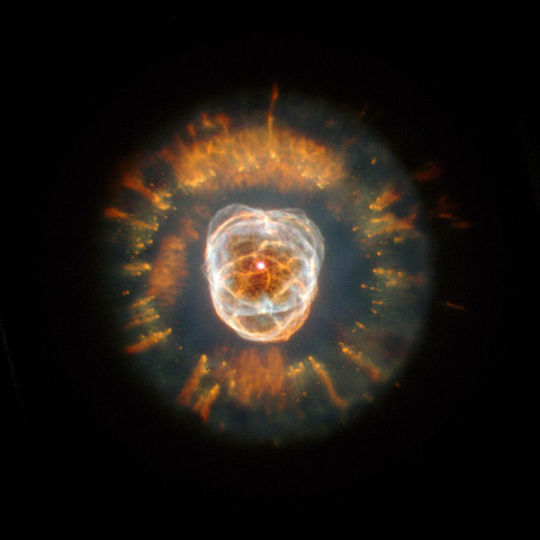
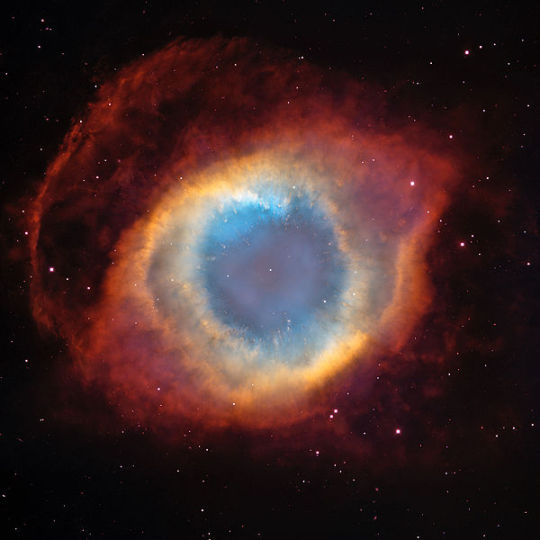
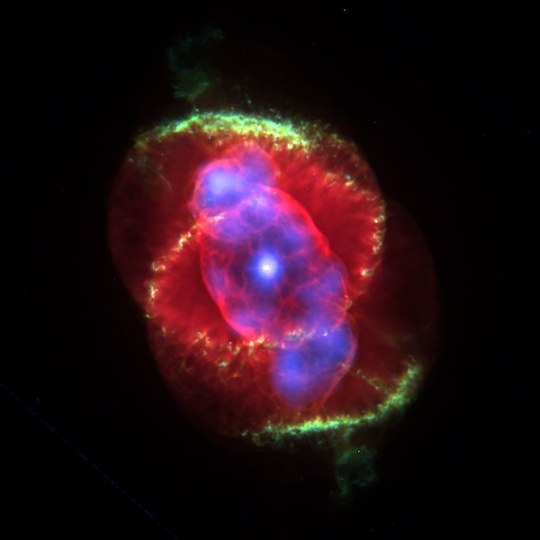
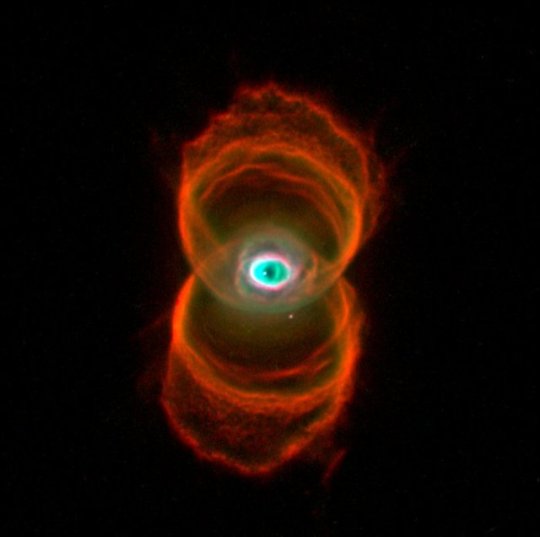
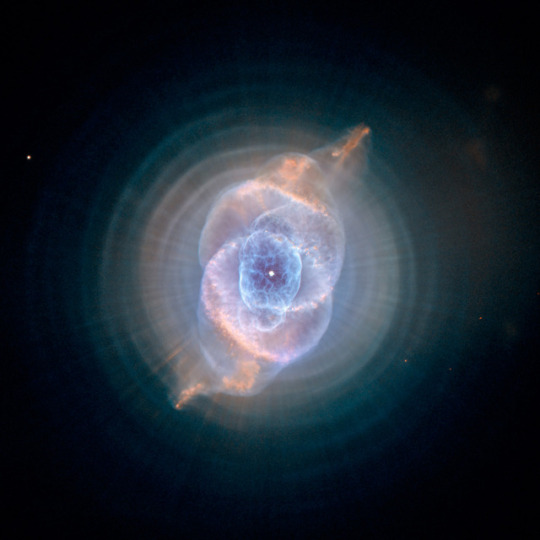


Planetary nebula
A planetary nebula, abbreviated as PN or plural PNe, is a kind of emission nebula consisting of an expanding, glowing shell of ionized gas ejected from red giant stars late in their lives. The word “nebula” is Latin for mist or cloud, and the term “planetary nebula” is a misnomer that originated in the 1780s with astronomer William Herschel because, when viewed through his telescope, these objects resemble the rounded shapes of planets. Herschel’s name for these objects was popularly adopted and has not been changed. They are a relatively short-lived phenomenon, lasting a few tens of thousands of years, compared to a typical stellar lifetime of several billion years.
Most planetary nebulae form at the end of the star’s life, during the red giant phase, when the outer layers of the star are expelled by strong stellar winds. After most of the red giant’s atmosphere is dissipated, the ultraviolet radiation of the hot luminous core, called a planetary nebula nucleus (PNN), ionizes the ejected material. Absorbed ultraviolet light energises the shell of nebulous gas around the central star, causing it to appear as a brightly coloured planetary nebula.
Planetary nebulae likely play a crucial role in the chemical evolution of the Milky Way by expelling elements to the interstellar medium from stars where those elements were created. Planetary nebulae are observed in more distant galaxies, yielding useful information about their chemical abundances.
Stars greater than 8 solar masses (M⊙) will likely end their lives in dramatic supernovae explosions, while planetary nebulae seemingly only occur at the end of the lives of intermediate and low mass stars between 0.8 M⊙ to 8.0 M⊙.
source
images: NASA/ESA, Hubble
6K notes
·
View notes
Text
Voyager: The Golden Record
It’s the 1970s, and we’re about to send two spacecraft (Voyager 1 & 2) into space. These two spacecraft will eventually leave our solar system and become the most distant man-made objects…ever. How can we leave our mark on them in the case that other spacefarers find them in the distant future?
The Golden Record.

We placed an ambitious message aboard Voyager 1 and 2, a kind of time capsule, intended to communicate a story of our world to extraterrestrials. The Voyager message is carried by a phonograph record, a 12-inch gold-plated copper disk containing sounds and images selected to portray the diversity of life and culture on Earth.
The Golden Record Cover
The outward facing cover of the golden record carries instructions in case it is ever found. Detailing to its discoverers how to decipher its meaning.
In the upper left-hand corner is an easily recognized drawing of the phonograph record and the stylus carried with it. The stylus is in the correct position to play the record from the beginning. Written around it in binary arithmetic is the correct time of one rotation of the record. The drawing indicates that the record should be played from the outside in.

The information in the upper right-hand portion of the cover is designed to show how the pictures contained on the record are to be constructed from the recorded signals. The top drawing shows the typical signal that occurs at the start of the picture. The picture is made from this signal, which traces the picture as a series of vertical lines, similar to ordinary television. Immediately below shows how these lines are to be drawn vertically, with staggered “interlace” to give the correct picture rendition. Below that is a drawing of an entire picture raster, showing that there are 52 vertical lines in a complete picture.

Immediately below this is a replica of the first picture on the record to permit the recipients to verify that they are decoding the signals correctly. A circle was used in this picture to ensure that the recipients use the correct ratio of horizontal to vertical height in picture reconstruction.

The drawing in the lower left-hand corner of the cover is the pulsar map previously sent as part of the plaques on Pioneers 10 and 11. It shows the location of the solar system with respect to 14 pulsars, whose precise periods are given.

The drawing containing two circles in the lower right-hand corner is a drawing of the hydrogen atom in its two lowest states, with a connecting line and digit 1 to indicate that the time interval associated with the transition from one state to the other is to be used as the fundamental time scale, both for the time given on the cover and in the decoded pictures.
The Contents
The contents of the record were selected for NASA by a committee chaired by Carl Sagan of Cornell University and his associates.

They assembled 115 images and a variety of natural sounds, such as those made by surf, wind and thunder, birds, whales and other animals. To this, they added musical selections from different cultures and eras, and spoken greetings from Earth-people in fifty-five languages, and printed messages from President Carter and U.N. Secretary General Waldheim.

Listen to some of the sounds of the Golden Record on our Soundcloud page:
Golden Record: Greetings to the Universe
Golden Record: Sounds of Earth

Songs from Chuck Berry’s “Johnny B. Goode,” to Beethoven’s Fifth Symphony are included on the golden record. For a complete list of songs, visit: https://voyager.jpl.nasa.gov/golden-record/whats-on-the-record/music/

The 115 images included on the record, encoded in analog form, range from mathematical definitions to humans from around the globe. See the images here: https://voyager.jpl.nasa.gov/golden-record/whats-on-the-record/images/
Making the Golden Record
Many people were instrumental in the design, development and manufacturing of the golden record.

Blank records were provided by the Pyral S.A. of Creteil, France. CBS Records contracted the JVC Cutting Center in Boulder, CO to cut the lacquer masters which were then sent to the James G. Lee Record Processing center in Gardena, CA to cut and gold plate eight Voyager records.

The record is constructed of gold-plated copper and is 12 inches in diameter. The record’s cover is aluminum and electroplated upon it is an ultra-pure sample of the isotope uranium-238. Uranium-238 has a half-life of 4.468 billion years.
Learn more about the golden record HERE.
Make sure to follow us on Tumblr for your regular dose of space: http://nasa.tumblr.com
9K notes
·
View notes
Photo

NGC 7714 Collides With Smaller NGC 7715
180 notes
·
View notes

